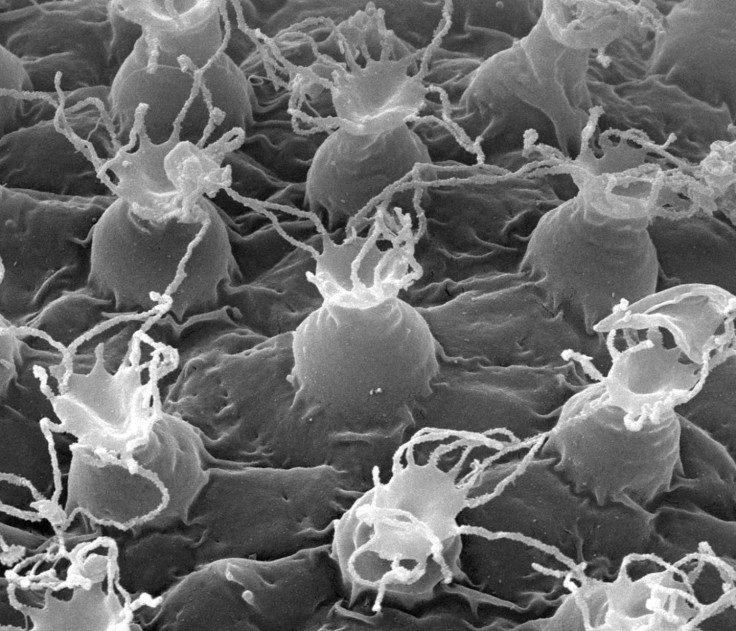New Tardigrade Species Found In Moss From Parking Lot In Japan

When it comes to survival, few creatures are as sturdy as the tardigrade. The tiny animals, also called water bears, are known to exist in over 1,000 different species, and a new one was just added to the list.
Researchers identified the new species, Macrobiotus shonaicus sp. nov., based on analysis of tardigrades they found on moss in a parking lot in Japan. The newly identified species is part of the hufelandi group and the persimilis subgroup, and exhibits similarities to traits from a number of other species around the world.
For instance, it most resembles M. anemone from the United States, M. naskreckii from Mozambique, and M. patagonicus from Argentina, according to a paper describing the new species. However, it also has “thin flexible filaments on terminal discs of the egg process” that allow it to be easily differentiated from these other species.
The flexible filaments also occur in M. paulinae from Africa and M. polypiformis from South America, but M. shonaicus differs from them, in that its eggs have a solid surface “between egg processes.”
Along with the two species from Africa and South America, and two other species — M. kristenseni and M. scoticus — researchers said M. shonaicus forms “a clade distinct from all other sequenced species of the hufelandi group with typical mushroom- or inverted goblet-shaped egg processes, which may suggest that the ancestor of the five species with atypical egg processes had a mutation allowing derivations from the mushroom or inverted chalice-like shape of egg processes.”
Study coauthor Kazuharu Arakawa from Institute for Advanced Biosciences, Keio University, in Japan, said in a statement Wednesday: “We revisit the large and long-standing Macrobiotus hufelandi group of tardigrades, originally described by Schultze in 1834 and where M. shonaicus also belongs, and suggest that the group contains two clades with different egg morphology.”
Of the roughly 1,150 known species of tardigrades, M. shonaicus became the 168th to be identified from Japan.
Led by Daniel Stec from the Jagiellonian University, Poland, the researchers examined the moss sample, and on finding tardigrades on it, they isolated 10 individuals. These 10 tardigrades “were used to start a laboratory culture to obtain more individuals required for the range of analyses.” Once the researchers had the required numbers, they “used phase contrast light microscopy (PCM) and scanning electron microscopy (SEM)” along with DNA analysis to identify “four molecular markers to characterize the new species and determine where it fit in the phylogenetic tree.”
Tardigrades, which have segmented bodies with eight legs and are usually less than half a millimeter in size, are interesting to science because they can survive in conditions that would kill most other living things. For instance, they can live through extreme pressure and temperature conditions — like thousands of meters below the sea surface, in hot springs and ocean beds, and on top of the Himalayas. They can even survive ionizing radiation hundreds of times more than humans could withstand, and even the vacuum of outer space. They can even live through starvation for up to 30 years.
However, despite all that, water bears are not considered true extremophiles, since continued exposure to extreme conditions increases their chances of dying, because they are not adapted to live in those conditions.
Titled “An integrative description of Macrobiotus shonaicus sp. nov. (Tardigrada: Macrobiotidae) from Japan with notes on its phylogenetic position within the hufelandi group,” the open-access paper was printed online Wednesday in the journal PLOS ONE.
© Copyright IBTimes 2024. All rights reserved.











